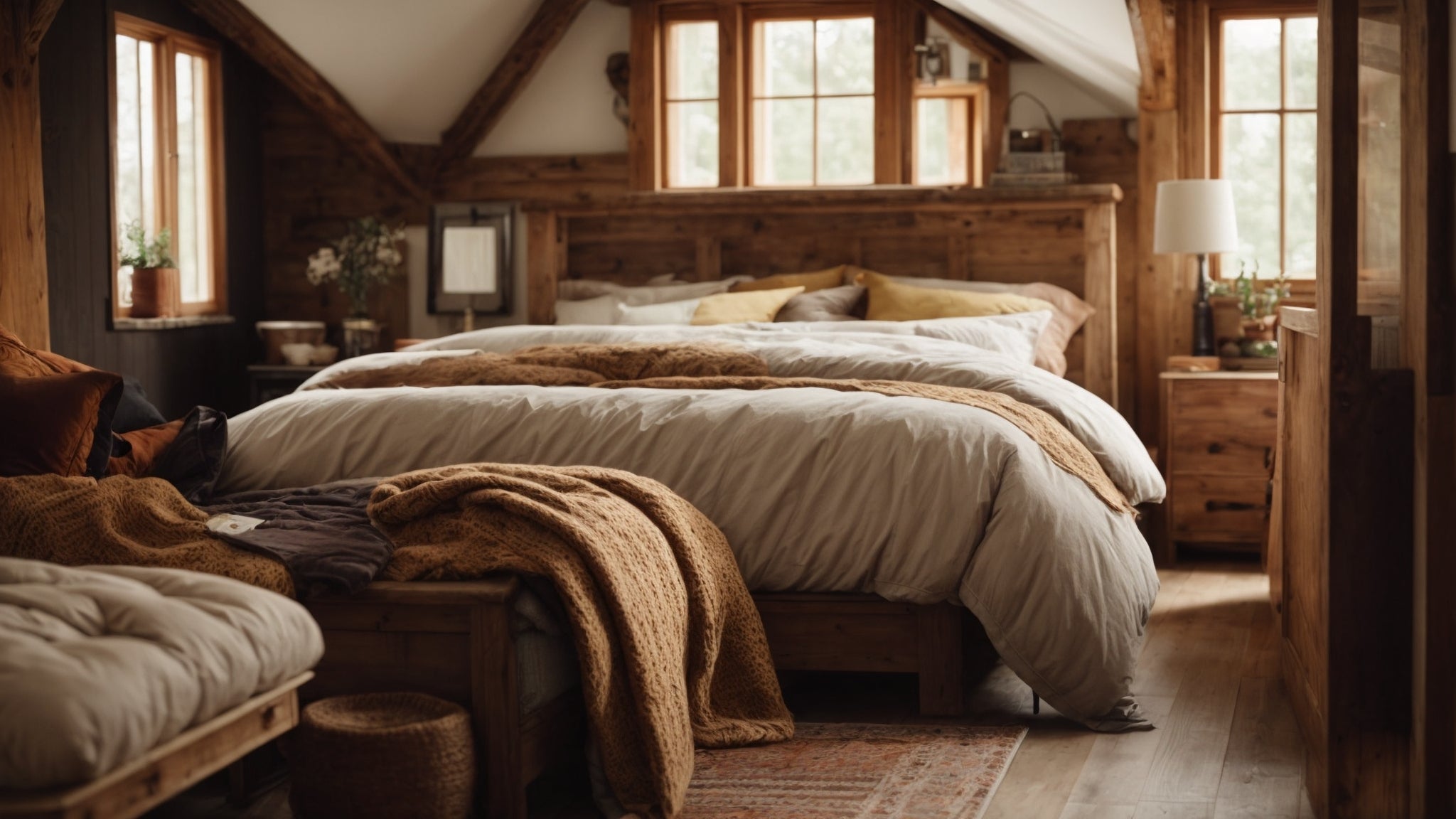Table of content
1. Understanding Mid-Century Modern Style
What defines mid-century modern interior design?
Mid-century modern style emerged in the mid-20th century and is characterized by clean lines, organic shapes, and a focus on functionality. It features elements such as minimalist furniture, sleek surfaces, and bold geometric patterns.
2. Incorporating Iconic Furniture Pieces
What are some iconic mid-century modern furniture pieces?
Iconic mid-century modern furniture includes designs by renowned designers such as Charles and Ray Eames, Eero Saarinen, and Arne Jacobsen. Pieces like the Eames Lounge Chair, Saarinen Tulip Table, and Jacobsen Egg Chair are emblematic of the style.
3. Embracing Minimalism
How does mid-century modern design embrace minimalism?
Mid-century modern design emphasizes simplicity and functionality, with clean lines and uncluttered spaces. It favors a less-is-more approach, focusing on essential elements and avoiding excess ornamentation.
4. Choosing the Right Color Palette
What are typical colors used in mid-century modern design?
Mid-century modern interiors often feature warm, earthy tones like olive green, mustard yellow, and burnt orange, alongside cool neutrals like white, gray, and beige. Bold accent colors such as teal, turquoise, and coral may also be used to add pops of vibrancy.
5. Incorporating Organic Shapes
How do organic shapes play a role in mid-century modern design?
Mid-century modern design draws inspiration from nature, incorporating organic shapes like curves, arcs, and biomorphic forms. These shapes can be found in furniture, lighting fixtures, and decorative accessories, adding visual interest and a sense of dynamism to interiors.
6. Utilizing Natural Materials
What are some common natural materials used in mid-century modern interiors?
Natural materials such as wood, leather, and stone are prevalent in mid-century modern design. Teak, walnut, and oak are frequently used for furniture, while leather upholstery and stone countertops add texture and warmth to spaces.
7. Creating Open Floor Plans
Why are open floor plans popular in mid-century modern homes?
(adsbygoogle = window.adsbygoogle || []).push({});
Open floor plans promote a sense of flow and connectivity, which aligns with the mid-century modern emphasis on social interaction and integration with the surrounding environment. They allow for seamless transitions between living spaces and encourage natural light to penetrate throughout the home.
8. Incorporating Statement Lighting
What types of lighting fixtures are characteristic of mid-century modern design?
Mid-century modern interiors often feature iconic lighting designs such as pendant lights, floor lamps, and sputnik chandeliers. These fixtures showcase sleek lines, sculptural forms, and innovative materials, serving as both functional luminaires and eye-catching works of art.
9. Adding Retro Accessories
How can you incorporate retro accessories into a mid-century modern interior?
Retro accessories like vintage radios, record players, and rotary telephones evoke the nostalgic charm of the mid-20th century and complement the aesthetic of mid-century modern design. Other retro-inspired accents include geometric prints, atomic motifs, and abstract artwork.
10. Mixing Old and New
Is it acceptable to mix mid-century modern furniture with contemporary pieces?
Absolutely! Mixing old and new elements is a hallmark of mid-century modern design philosophy. Pairing vintage mid-century modern furniture with contemporary pieces can create a dynamic and eclectic interior that feels both timeless and fresh.
11. Maximizing Functionality
How does mid-century modern design prioritize functionality?
Mid-century modern furniture and architecture are celebrated for their practicality and efficiency. Designs often feature built-in storage, multifunctional furniture pieces, and innovative space-saving solutions to maximize usability without sacrificing style.
12. Incorporating Indoor-Outdoor Living
Why is indoor-outdoor living important in mid-century modern homes?
Mid-century modern architects like Richard Neutra and Joseph Eichler pioneered the concept of blurring the boundaries between indoor and outdoor spaces. Large windows, sliding glass doors, and outdoor living areas allow residents to connect with nature and enjoy the surrounding landscape.
13. Designing Mid-Century Modern Kitchens
What are some key features of mid-century modern kitchens?
Mid-century modern kitchens are characterized by clean lines, minimalist cabinetry, and functional layouts. They often include elements like flat-panel cabinets, laminate countertops, and geometric tile backsplashes, as well as retro-inspired appliances and fixtures.
14. Creating Retro-Inspired Bedrooms
How can you design a mid-century modern bedroom with a retro vibe?
To create a retro-inspired mid-century modern bedroom, opt for low-profile platform beds, sleek dressers, and iconic lighting fixtures like Nelson Bubble Lamps or George Nelson Ball Clocks. Incorporate bold geometric patterns, vibrant accent colors, and textured fabrics for added visual interest.
15. Enhancing Mid-Century Modern Bathrooms
What are some design elements typical of mid-century modern bathrooms?
Mid-century modern bathrooms often feature clean lines, minimalist fixtures, and natural materials like wood and stone. Freestanding soaking tubs, pedestal sinks, and floating vanities contribute to the streamlined aesthetic, while retro tile patterns and brass accents add vintage charm.
16. Choosing Mid-Century Modern Color Schemes
What are some popular color schemes in mid-century modern interiors?
Mid-century modern color schemes typically include a combination of warm and cool tones, with bold accent colors for added visual interest. Earthy hues like avocado green, mustard yellow, and burnt orange are often paired with neutral shades like white, gray, and beige.
17. Embracing Statement Wall Treatments
How can you create a statement wall in a mid-century modern interior?
Make a bold statement in a mid-century modern interior with a feature wall clad in retro-inspired wallpaper, textured wood paneling, or vibrant paint. Choose geometric patterns, abstract motifs, or organic textures that complement the overall aesthetic of the space.
18. Incorporating Retro Flooring Options
What types of flooring are suitable for mid-century modern interiors?
Mid-century modern interiors often feature flooring materials like hardwood, terrazzo, and cork, which offer durability, versatility, and timeless appeal. Retro-inspired options like patterned linoleum, colorful mosaic tile, and shag carpeting can also add a playful retro vibe.
19. Showcasing Iconic Artwork and Sculptures
What are some iconic artworks and sculptures associated with mid-century modern design?
Iconic artworks and sculptures from the mid-century modern era include abstract paintings by artists like Jackson Pollock and Mark Rothko, as well as sculptural pieces by Alexander Calder and Isamu Noguchi. Display these works prominently to add a touch of artistic sophistication to your interior.
20. Incorporating Retro-Inspired Accessories
How can you accessorize a mid-century modern interior with retro flair?
Add retro-inspired accessories like vintage telephones, atomic-era clocks, and abstract sculptures to evoke the spirit of the mid-20th century. Look for pieces with clean lines, bold colors, and futuristic shapes that complement the overall aesthetic of your mid-century modern decor.
21. Creating Cozy Reading Nooks
How can you design a cozy reading nook in a mid-century modern home?
To create a cozy reading nook in a mid-century modern home, select a comfortable armchair or chaise lounge with retro-inspired upholstery and place it near a window or under a pendant light. Add a small side table for books and a floor lamp for task lighting, and layer soft textiles like throws and pillows for extra comfort.
22. Incorporating Biophilic Design Elements
How does biophilic design complement mid-century modern interiors?
Biophilic design principles, which emphasize connections to nature, align with the mid-century modern emphasis on organic forms and natural materials. Incorporate biophilic elements like indoor plants, natural light, and views of the outdoors to enhance the health and well-being of occupants while reinforcing the timeless appeal of mid-century modern design.









